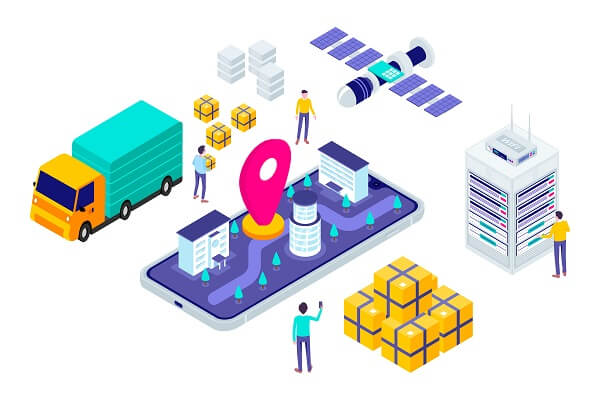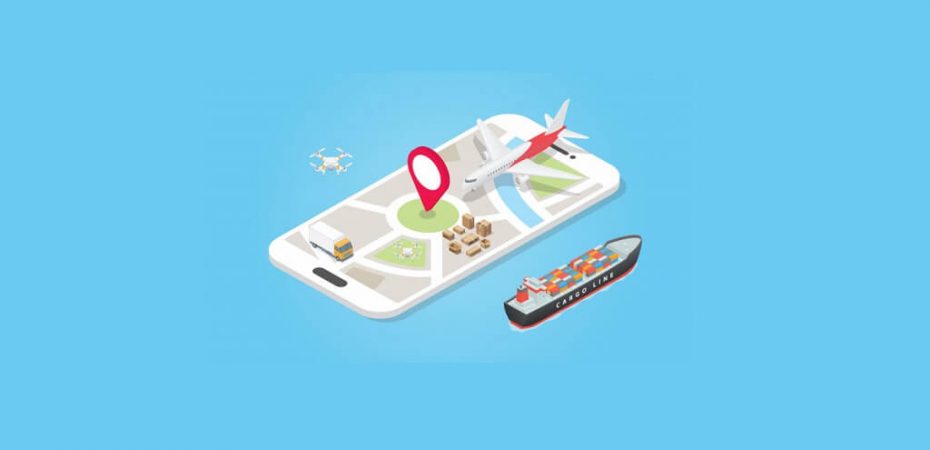For Australian businesses with mobile and non-mobile assets, using GPS asset tracking could have many possible benefits. Understanding precisely how asset tracking in Australia works, however, requires a bit of a step back to examine two of the underlying technologies that make it possible. First, the global positioning system (GPS)—a United States military-developed technology. Second, the ‘internet of things’ (IoT), a phrase coined by a researcher at MIT and the reality that it now describes. Both of these combine to make asset tracking as it is carried out today possible.
As the underlying technologies become cheaper and more readily available, GPS and IoT can interact in increasingly sophisticated ways. With that in mind, several benefits become clear, namely knowing where assets are and what they’re doing. This information allows for plenty of difficult decisions to be made much more easily. After exploring the underlying concepts, the benefits will be examined in more detail below.
What is GPS?

The United States Defence Department developed the idea for the global positioning system in 1973. The first satellite that would make it up was launched in 1978; the first handheld receiver to give a reading was released in 1989, and in 1996, it was made available for use by civilians. Since its implementation, the enormous potential benefits have been clear, both in terms of improvements to safety and money saved. (1)(2)
While devices using GPS are ubiquitous, it is still worth knowing how GPS actually works in order to understand its relationship with asset tracking. GPS is a system with three pieces, or ‘segments’:
- The space segment—This is made up of satellites, each in their own orbit at an altitude of 11,000 nautical miles above sea level.
- The user segment—These are the receivers that are in your phone or car or placed on another device or asset.
- The control segment—This is a series of ground stations that help to confirm the distance between a user and a given satellite. (2)
When someone refers to ‘a GPS,’ they usually mean a receiver or their part of the user segment. The receiver is able to tell a user their location, using something called ‘trilateration.’ To understand this, imagine that you know you’re in Victoria, but you do not know where. If you were told that you were 300km away from Melbourne, it might not help much. However, if you knew how far away you were from another pair of destinations as well, you’d be able to pinpoint your location with much greater accuracy. (3)
The different segments of GPS help users to locate themselves using a similar principle. There are enough satellites in the space segment to ensure that, no matter where you are, your receiver should be able to ‘see’ four satellites. Next, it can confirm where you are using the control segment ground stations and finally provide you with an answer: your actual location. (3)
While the US Military initially had concerns over what the technology could be used for, it was first made available for civilian use with restrictions before being made available without restrictions in 2000. A final check—the ability to decrease the quality of non-military GPS during a crisis—was phased out in 2010, and now the system is available for use around the world without cost. (2)
For companies interested in using the technology, all of this has been a boon; there are plenty of ways in which it can be beneficial for a business, including approaches such as asset tracking.
What is the Internet of Things?
There is another component to how GPS asset tracking works: the so-called ‘internet of things’ (IoT). The phrase was coined by Kevin Ashton—a researcher at MIT—in 1999, as he developed and promoted the technology of radio frequency identification (RFID). RFID goes beyond what a typical UPC barcode might allow, letting an object transmit a signal that is read by a receiver. When used on more and more objects, the applications of this technology are very broad, including the IoT. (4)
Elaborating on it ten years later in 2009, by which time the phrase IoT was in more common use, Ashton explained what he had meant: computers mostly depend on people for information, but people have limited amounts of time and attention, and humans make mistakes. ‘RFID and sensor technology, on the other hand ‘enable computers to observe, identify and understand the world—without the limitations of human-centered data.’ Having individual ‘things’ talk to one another and computer systems via the internet has immense possibilities. (5)
In a world where this was the norm, Asthon predicted, ‘we would be able to track and count everything, and greatly reduce waste, loss, and cost. We would know when things needed replacing, repairing, and recalling, and whether they were fresh or past their best.’ All of this should make clear why GPS asset management, which relies on the IoT to function, could provide so many benefits to different kinds of businesses. Indeed, Asthon believed that the IoT could shift the paradigm in the same way that the internet itself did. (5)
Since Asthon made that prediction in 2009, research on the IoT has exploded. Per an article from 2020, that same year (2009), there were 160 publications on the topic. In 2016 there were over 10,000, and then over 20,000 between 2018 and 2019. Many areas of research have proven fruitful, and several of them touch on what GPS asset management is concerned with, namely how to increase efficiency and other positive aspects of an operation and to decrease bad ones.
7 Benefits of GPS Asset Tracking

GPS asset tracking began with vehicles, and it can still offer a business with mobile equipment many benefits. As it has developed, it has taken on applications that can help a business to understand the part that non-mobile assets and people form in their operation. All of this means that asset tracking can benefit a business in a number of ways, including the following:
- Track assets—This one is obvious and important. Knowing where assets are and how they’re being used can help in all sorts of ways, from preventing theft to better understanding how the operation is working. This can make it easier to realize when and how the operation needs to be changed or assets need to be repurposed.
- Maximize efficiency—Beyond GPS data, asset tracking can reveal how efficiently a vehicle is being driven or how optimally a piece of equipment is being used. So much of a business’s investment goes into equipment, and not using it as efficiently as possible is an unfortunate waste—one that asset tracking can help to prevent.
- Lower costs—Knowing where assets are and how they’re being used at all times saves valuable energy and effort. It allows for more efficient practices to come to the forefront. Implementing these may help to save money. It also helps to prevent theft, which lowers the cost for obvious reasons.
- Ensure ‘Chain of Responsibility’ (CoR)—CoR is important for any business that deals with the supply chain. By using asset tracking, a manager can make sure that they have an answer if any questions should arise about an incident or the role of their driver or vehicle. (7)
- Meet health and safety requirements—Similarly, asset tracking can involve vehicle tracking and driver monitoring, to help make sure that a business is meeting its legal obligations. Staying compliant with health and safety can be made easier by integrating check-lists and other procedures, then collecting that data and ensuring that it is kept safe.
- Single source of truth—With one main repository for all data coming in from various assets, a business operator can know that there is only one place to turn to when a question arises around conflicting information. This can reduce redundancies, which in turn saves money.
- Make data-driven decisions—The amount of information made available by the combination of IoT and GPS asset tracking is impressive. Every aspect of how the pieces of an operation are running can be examined in detail, and decisions can be made based on evidence. It can be difficult to change minds but armed with data about how an operation is actually functioning; hard decisions can become easier ones.
These are just some of the benefits that GPS asset tracking offers. By combining GPS technology with the automatic communication between ‘things’ that the IoT makes possible, asset tracking can help to lower costs, increase efficiency, and solve problems that arise from having a lack of information or having information spread too thinly over many places. While personal uses of tracking technologies may raise privacy concerns, asset tracking may help to encourage accountability while benefiting businesses in a range of ways.
Conclusion
If a business is considering implementing a GPS asset tracking strategy, it’s worth weighing the possible benefits against the costs. As the technology that allows for the IoT to operate gets cheaper and cheaper, the objections to using asset tracking may further diminish. Even now, a lot of progress has already been made, and it could be well worth it for Australian business owners to consider implementing asset tracking in their operations.
Read Also

